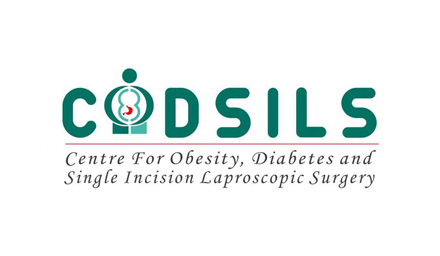
15 Mar Obesity – A Chronic Disease and The Biggest Killer
Obesity – A Chronic Disease and The Biggest Killer
“Obesity and Type 2 Diabetes Mellitus” has gained the distinction of epidemic proportions and has evolved as one of the most serious public health problems in the 21st century. Obesity is a chronic progressive disease marked by the excess accumulation of body fat, which can significantly reduce life expectancy by impairing the normal functioning of vital organs. Morbid Obesity is an extreme health hazard that impacts your medical, physical, psychological and metabolic well – being. It passes from person to person, and generation to generation, in urban communities with unhealthy food habits, limited space for exercise, low physical activity in schools, and scant attention from local legislators to enhance policies and programs that address obesity among young people.
There has been a tremendous increase in the number of individuals struggling to loose weight. Additionally, obesity has become increasingly prevalent in the children. Obesity is the underlying factor for the majority of the medical problems. It is the second most common preventable cause of death after smoking.
Obesity is measured by body mass index (BMI). BMI is calculated by dividing your weight in kilograms by your height in meters2. Normal BMI ranges from 18.5 to 22.4 kg/m2
Dietary habits and sedentary life style are often the determinants of the disease. However, depression, stress, genetics, steroids, hormonal imbalance and certain endocrinal disorders can cause obesity.
Effects of Obesity
Heart Disease and Stroke
Heart disease and stroke are the leading causes of death and disability for both men and women. Very high blood levels of cholesterol and triglycerides can lead to hypertension, angina and sudden death from heart disease or stroke without any signs or symptoms.
Reducing your weight by 20% can decrease your chance of developing heart disease by improving how your heart works, blood pressure, and levels of blood cholesterol and triglycerides.
Diabetes
Type II diabetes reduces your body’s ability to control your blood sugar. It is a major cause of early death, heart disease, kidney disease, stroke and blindness. In Type II diabetes patient develops insulin resistance which means that fat, liver and muscle cells do not respond normally to insulin. As a result, blood sugar does not get into cells to be stored for energy and blood sugar level inevitable increase. You can reduce your risk of developing this type of diabetes by losing weight.
Sleep Apnea
Sleep apnea can cause a person to stop breathing for short periods during sleep. Sleep apnea may cause excessive daytime sleepiness, fatigue, morning headaches and even heart failure. Weight loss leads to marked improvement in sleep apnea.
Osteoarthritis
Osteoarthritis is a common joint disorder that most often affects the joints in your knees, hips and lowers back. Extra weight appears to increase the risk of osteoarthritis by placing extra pressure on these joints and wearing away the cartilage that normally protects them. Weight loss can decrease stress on the joints to improve the symptoms of osteoarthritis and prevent further damage to the joints.
Psychological aspects
Obese patients have significantly poorer quality of life than their normal weight counterparts. Moreover, obese people are stigmatized world over. It is perceived as an undesirable physical appearance. Even children often perceive obese children in a negative manner. Friendships and relationships shift and strain as a woman’s size and possibly her outlook on life change. Husbands feel threatened by a wife’s new look, or insecure about their own girth. Therefore, subjects with morbid obesity are commonly described as depressed, anxious, having poor impulse control and possessing low self-esteem.
Prevention and Treatment
- Behavior and life style modifications – To achieve and maintain health and weight outcomes, significant lifestyle changes are required for a lifetime and include healthy eating habits, regular exercise (30 minutes a day for 5 days a week), self monitoring and stress management.
- Women in child bearing age should maintain a healthy weight, which help prevent obesity in future children. Entering into pregnancy with a healthy weight also helps prevent gestational diabetes and lowers kid’s risk of developing diabetes. Mothers to be do not actually need to “eat for two.” Overeating in pregnancy and gaining excessive weight can put mother and child at risk of obesity.
- Obesity is an addiction, no different than smoking, alcohol or drugs, and must be managed and treated in a similar fashion.
- While medical options such as weight loss programs, diet and drug therapies are ever present and increasing, only 3-7% of the patients with a diagnosis of obesity are able to achieve effective and consistent weight loss.
- Bariatric and metabolic surgery is the only effective long term method to treat obesity and diabetes.
Choose your weight loss procedure with Dr Amit Garg, CODSILS, according to your Age, BMI and comorbidity status.


